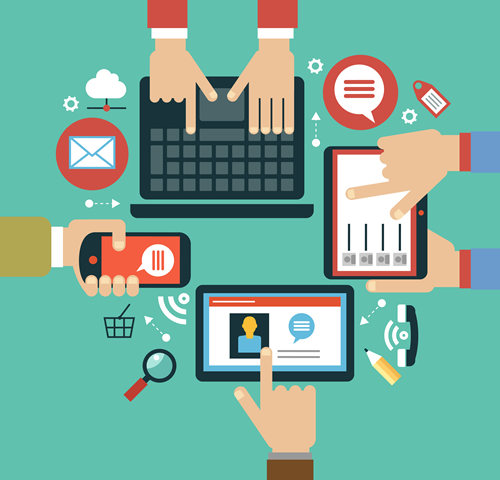What are the ingredients and directions in a recipe for personalized learning?
Take one learning platform (because we want only one place to go for everything) and add a variety of digital content and learning applications from all different sources.
Next, whisk the content until it’s broken down into discrete learning objects that can be made available to the right student at the right time for the right learning objective.
Sounds like a great technique for achieving individualized and differentiated learning, doesn’t it?
Well, let’s break this down a little bit further because it involves quite a bit of behind-the-scenes maneuvering to make possible everything in that little “recipe” that might not be so obvious.
Step 1: Authentication and rostering
Student, teachers, and classes need to be set up in the learning platform and accounts have to be correctly assigned. To save teachers or tech departments from manually creating roster files, school districts should adopt standard ways of rostering students.
It’s not just rostering in the learning platform, it’s rostering all of the different instructional software being used in a district. How are students going to get access to all of those systems? How can we keep from having a list of unsecured passwords that is as long as the instructions for filing federal tax forms?
Think of this as everyone being able to use the same front door to access all the instructional software and never having to wait in line. No more going to different login screens; no more remembering different user names and passwords. This concept of standardization—or having an agreed-upon way to handle a technical thing like rostering—is called interoperability.
Step 2: Ingesting digital content
The value of digital content rather than paper-based content is worth highlighting in the focus on personalizing learning. Leilani Cauthen, chief executive officer of Learning Counsel and author of The Consumerization of Learning, articulates this concept well: “[Traditional content] cannot talk, convert to a different language on the fly, become interactive, be searched internally on keywords or phrases across multiple of a document species in some instances, assess the ability of the user, or remember where you were when you quit interacting with the content, like the age-old bookmark.” Digital content offers far greater benefits for learners and educators planning instruction.
The 2018 Digital Learning Report from Project Tomorrow indicates that “80 percent of teachers say that their primary goal with using digital content in the classroom is to engage their students in learning. While engagement is an important goal, the potential of the digital and online resources to support new learning environments, and in particular to enable learning that is personalized for each child, is not yet being fully realized in our nation’s classrooms.” Why the disconnect? Part of the issue is scarcity of one of the most important resources: time.
While a blank page may be necessary for a writer, it’s not for teachers. Learning platforms can be pre-populated with digital content so that teachers do not have to seek out and be both a hunter and gatherer to find great digital content for their lessons (or develop technical skills to design content). District leaders should be populating the learning platform with digital content from content adoptions and other digital content sources (such as open educational resource repositories). But how does that content get inside the learning platform? This is where technology comes in handy.
Bundling learning objects along with metadata to inject content into a learning platform can vastly decrease the time and effort it takes to make digital content available and also make it easier to choose content that is appropriate for each learner in each learning situation.
Step 3: Connecting learning apps and tools
By adopting interoperability standards, IT administrators can easily and securely connect learning applications and tools with learning platforms, in a secure manner, and without the need for expensive custom programming.
Now the learning platform truly becomes the “hub” of learning. It’s the front door through which teachers and learners can access the resources they need. It’s the repository in which discrete learning objects can be found through the rich metadata associated with them, and it seamlessly launches all the other instructional tools available as well.
One example of this approach is Baltimore County Public Schools’ BCPS One. BCPS One includes the student information system, learning management system, digital content, instructional tools, and more. “BCPS has implemented a digital ecosystem called BCPS One, available anytime, anywhere for all 20,000 staff, including 10,000 educators and 114,000 students. We use IMS Global Learning Consortium standards including learning tools interoperability (LTI), thin common cartridge, and question and test interoperability (QTI) to bring together separate software systems into one seamless environment for ease of access and use,” says Jeanne K. Imbriale, director of enterprise applications for BCPS.
Now is the time to “get in the kitchen and cook up” a strategic plan that supports personalized learning for your district. Interoperability based on open standards developed by the education community is becoming more important as teachers and learners need more products that easily work together and provide useful data.
District leaders representing IMS Global Learning Consortium have developed an easy-to-follow recipe called the K-12 Digital Learning Revolution Program, a four-tiered strategy to help districts of all sizes achieve a plug-and-play teaching and learning ecosystem.
- 4 ways to encourage play in education - April 25, 2024
- CoSN IT Leader Spotlight: Lisa Higgins - April 25, 2024
- It’s time to pay student teachers - April 25, 2024


